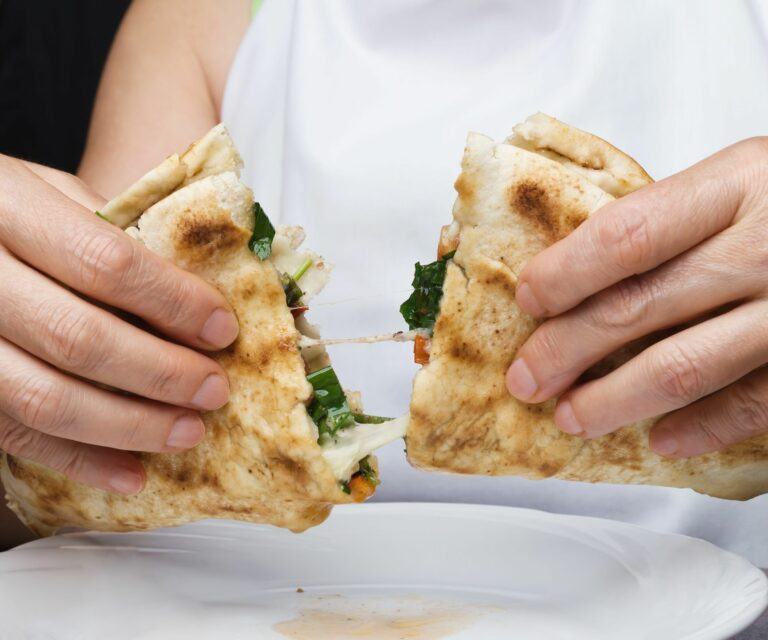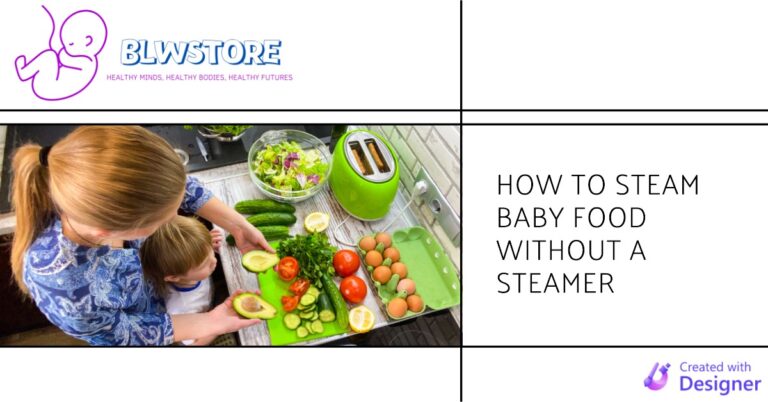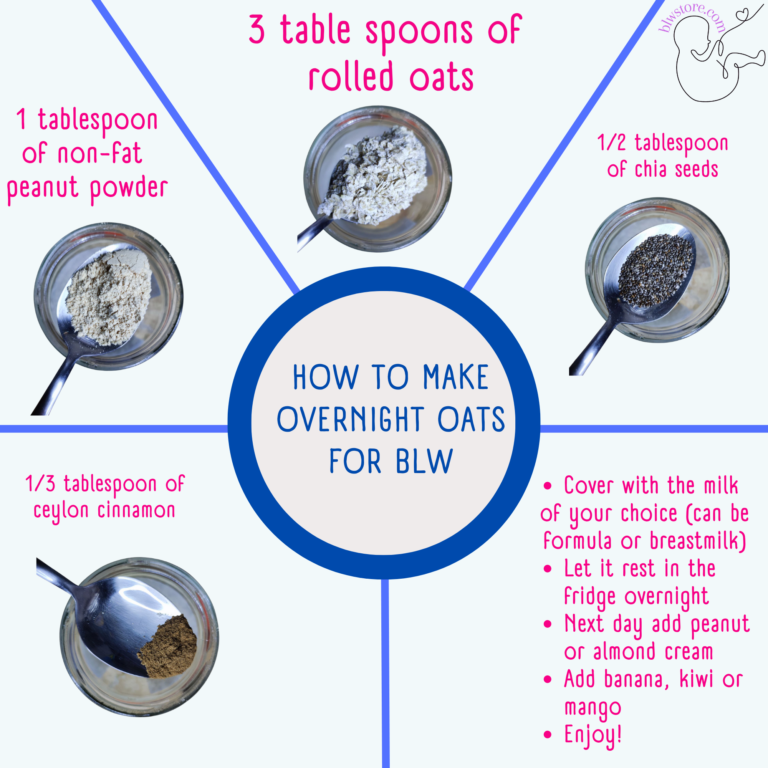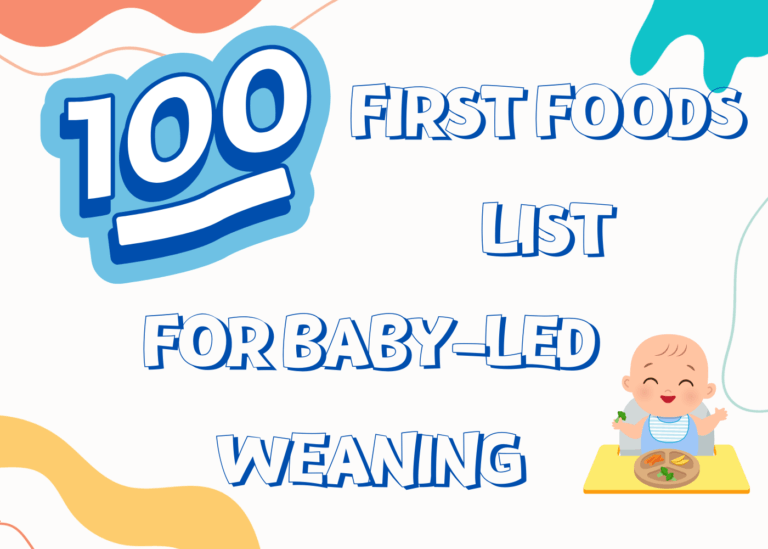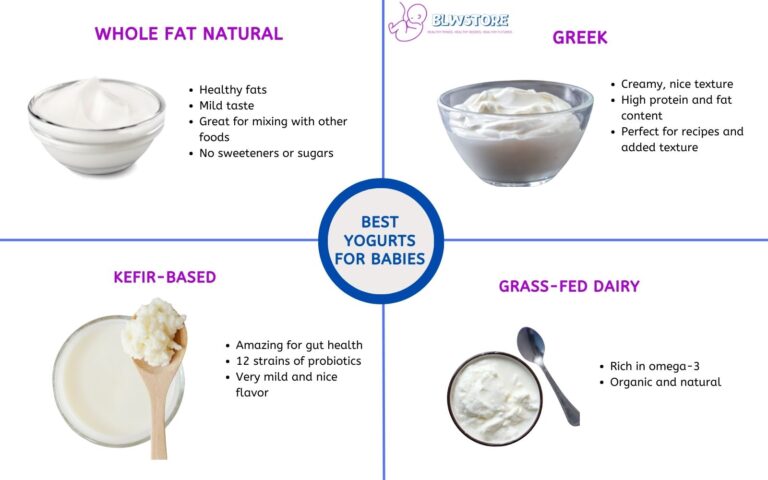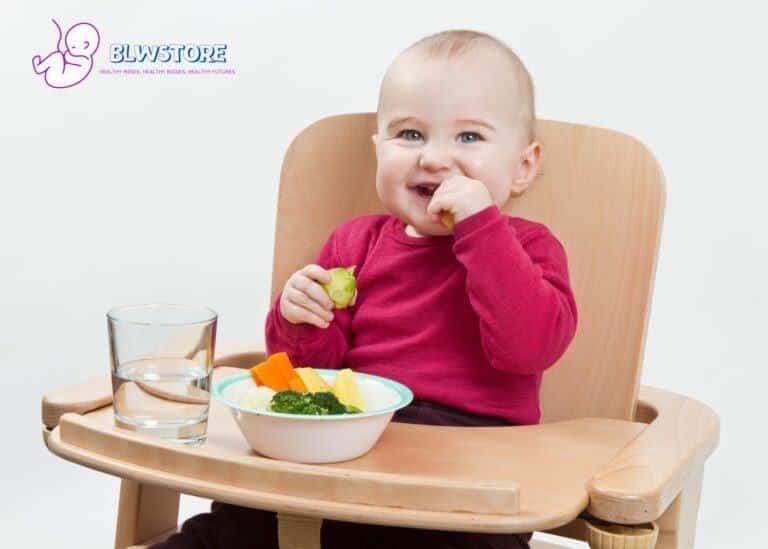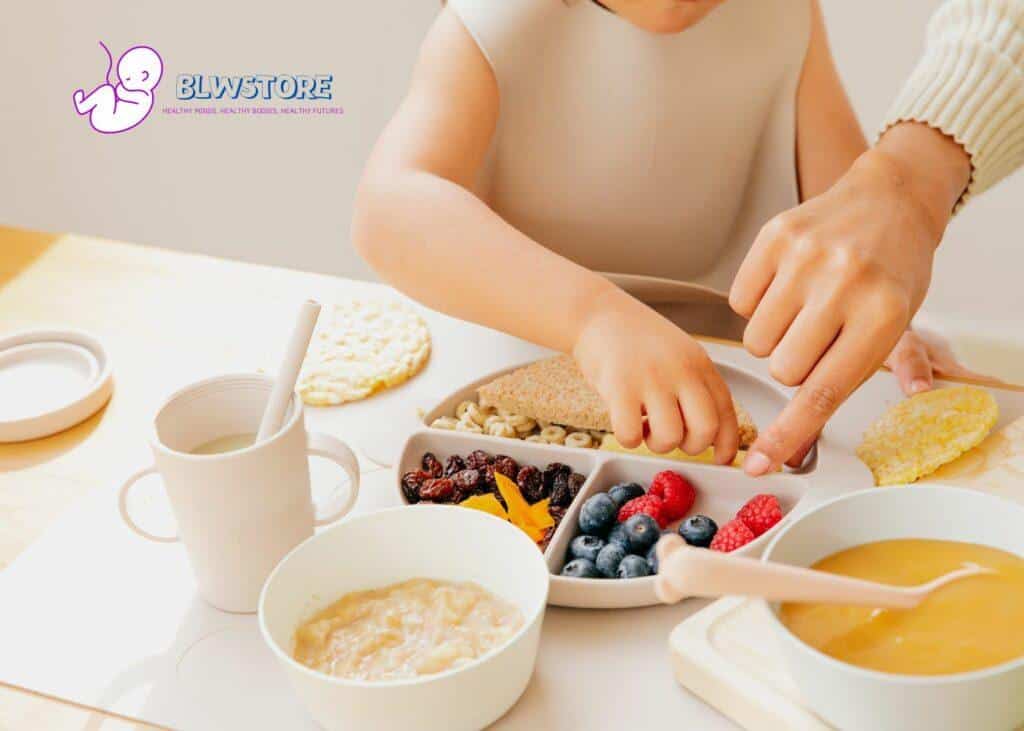
Are you a parent wondering which method of introducing solid foods to your baby is best for their development?
Look no further!
In this comprehensive guide, we’ll explore the pros and cons of “BLW vs. purees” to help you make an informed decision that suits your baby’s needs and your lifestyle.
In this article, we will cover:
- An overview of traditional spoon-feeding purees and Baby Led Weaning (BLW) methods
- The benefits of BLW, including fostering independence, encouraging adventurous eating, and developing motor skills
- The advantages of purees, such as easier swallowing and reduced choking risks
- The importance of establishing healthy eating routines for babies
- Tips from experienced parents on successfully implementing BLW
- Best foods to start with in BLW and how to prepare them
- A balanced comparison between BLW and purees to help you choose the right method for your baby
By the end of this article, you’ll have a thorough understanding of the BLW vs purees debate, enabling you to make the best choice for introducing solid foods to your little one.
Let’s get after it!
If you prefer the short video version, here you have it:
Our Short Answer
As parents, teachers, and nutritionists, Maria and I always recommend the Baby-Led Weaning method to all our friends and acquaintances because of all the benefits it brings. However, this doesn’t mean that we avoid purees, but rather that we offer them when we have them ourselves.
Since our son Pablo started BLW, Maria and I modified our diet and way of cooking so that we could enjoy the same meals as our son. If we made zucchini and potato puree, we all ate that puree, not just Pablo. This means not making “baby food” and using the most natural way of introducing solid foods, while the family eats the same, which also gives the baby the confidence to try everything.
Spoon-feeding pureed foods is the most common way to start babies on solids. Many experts also advise mixing purees with table foods, which is what we usually recommend to those parents who are unsure about which method to use.
The main difference between the two is oral development. With purees, babies swallow first, then chew. BLW has babies chewing immediately, refining their motor skills.
In the end, both methods are beneficial if parents give diverse, healthy foods and follow the baby’s cues. The World Health Organization also suggests starting complementary foods around six months, but readiness differs for each baby. Some might start earlier or later than six months.
Remember, there’s no single “correct” method; it’s about what suits your family. If in doubt, talk to a pediatric dietitian or pediatrician.
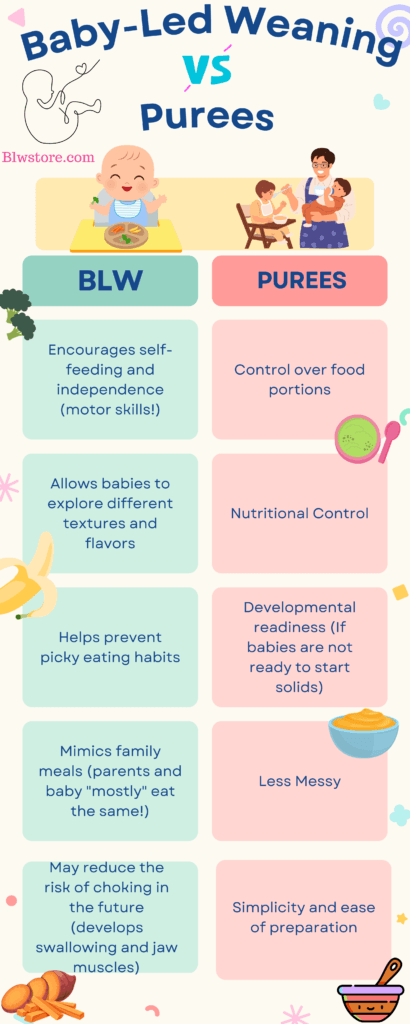
What is Baby Led Weaning about?
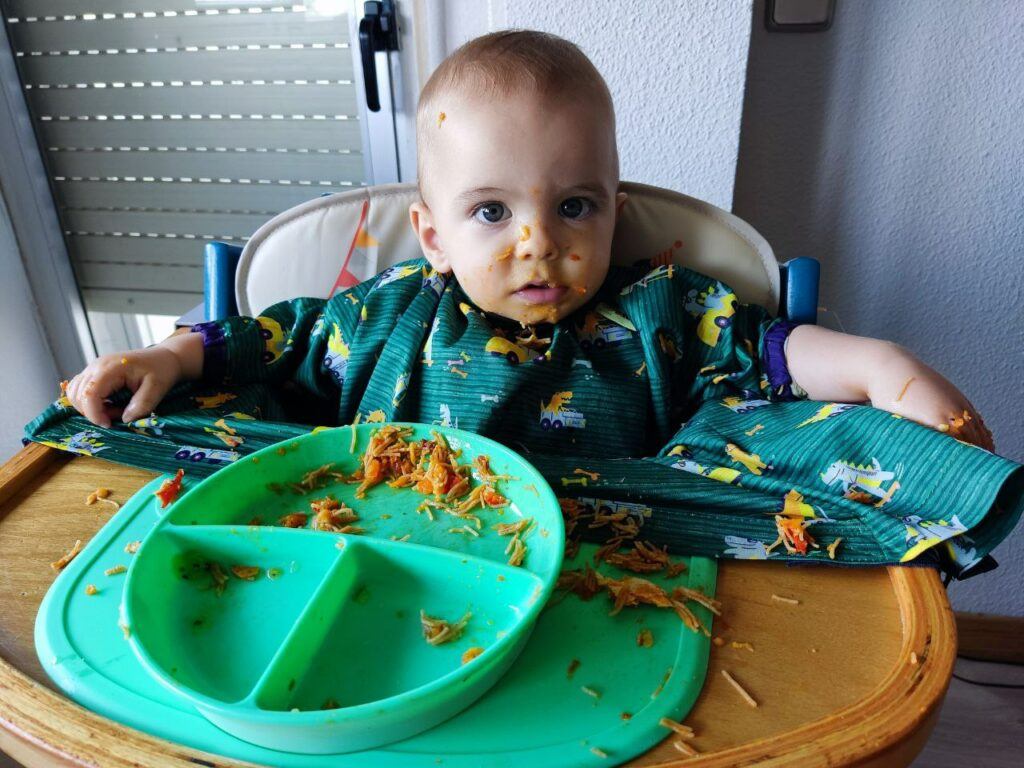
Baby-led weaning is a wonderful way to introduce solid foods to infants because it allows them to self-feed and discover new textures and flavors on their own.
Instead of being spoon-fed purees, babies are able to explore and try different foods at their own pace and choose what and how much they want to eat.
This approach empowers babies to have control over their own feeding process, which can be a very positive and enjoyable experience for them.
Purees, on the other hand, are smooth, homogenized mixtures of food that are typically given to infants by a caregiver, who controls the amount and type of food that is offered.
Overall, baby-led weaning is a great way to encourage self-discovery and independence in infants when it comes to solid foods.
Why is Blw better than Purees? 7 Reasons
Baby-Led Weaning involves providing solid food for the infant to eat by itself; allowing them to experiment with assorted tastes and textures. This helps them rely on their own intuition to decide what they like and don’t like, fostering independence and a more natural relationship with food while promoting the development of vital motor and oral skills. And most importantly, BLW is fun for them!
1. Fosters Independence
BLW involves providing solid food for the infant to eat by itself; allowing them to experiment with assorted tastes and textures.
This helps them to rely on their own intuition to decide what they like and don’t like.
This trust in their own judgement will continue into later life, teaching them to make their own dietary choices and trust their instincts.
2. Less likely to be picky eaters in the future
This claim has not yet been scientifically proven. So this paragraph comes from our personal experience.
We have been doing BLW since he was 6 months old with Pablo and the results have been amazing compared to some friends we have who did not dare to do it with their daughter. Currently, at 2 years old, Pablo eats absolutely everything: textures, flavors, types of foods… The daughter of our friends however, there are many foods that she does not know how to manage and prefers not to, since she has been drinking baby drinks and eating purees since she was 6 months old.
Does this mean that this consequence has been thanks to blw? We can’t be sure, but we think it has a lot to do with it, since Pablo has experimented with dozens of different textures, flavors and foods, so we assume that he has a much higher tolerance to discover new foods.
Related read: 12 tips and tricks for picky eaters
3. Their relationship with food is more natural
Developing routines and habits is essential for humans. It’s better to study for an hour a day for 10 days prior to an exam instead of cramming 10 hours the day prior.
Research has proven that establishing and maintaining healthy routines is especially important for babies and kids.
When infants have a daily routine of being exposed to different food items, they will easily form a healthy bond with food. This makes it simpler to allow them to try out new foods later in life.
4. Promotes the development of vital motor and oral skills
By allowing your baby to self-feed, they will learn to use their hands to grab and manipulate food, strengthen their coordination, and explore different textures.
Additionally, by using their mouth to chew and swallow, they will strengthen their jaw, tongue, and facial muscles, leading to better speech development.
5. Improves and facilitates family meals
Honestly, this was the most important factor while using this method. We were able to establish a family meal rutine where our son would sit down with us during breakfast, lunch and dinner, creating and fostering a natural eating environment. No more having the baby napping or in our arms while we eat.
6. It is cheaper!
BLW can prove to be more cost-efficient than purees. You won’t require any expensive equipment, such as a blender or food processor, and you can merely give your baby a modified version of the same food you’re eating – no need to spend extra cash.
BLW promotes a baby to feed themselves, so you don’t have to purchase expensive purees.
Moreover, if you give your baby more finger foods, you may be able to avoid buying expensive infant snacks. If you’re looking to save money while feeding your baby, BLW might be the ideal choice!
7. And more importantly…it is fun for them!
Baby Led Weaning is much more interactive than purees.
You can have fun watching your baby discover new tastes and textures and create bonds through shared meals.
Babies enjoy experimenting with their hands and it is actually really beneficial for them to explore different textures!
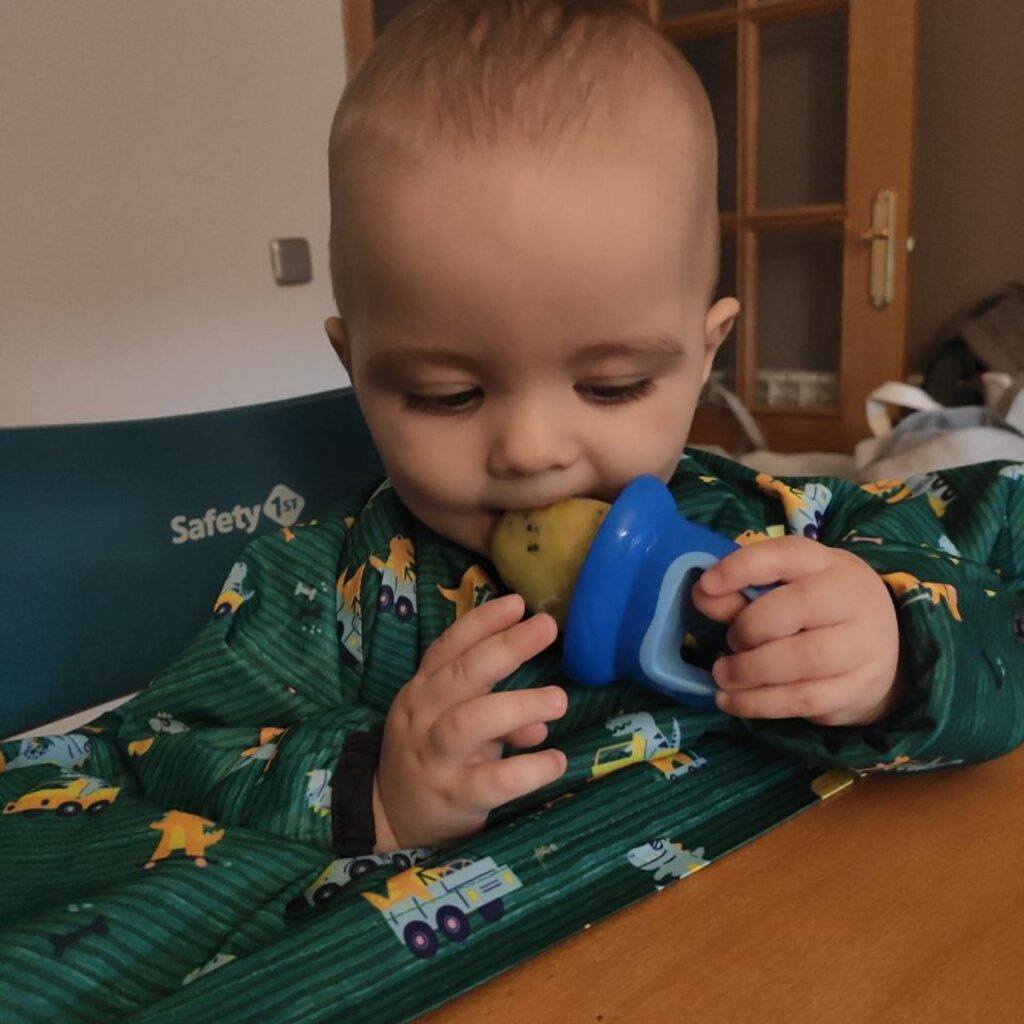
Are there any extra dangers while doing Baby Led Weaning?
Current research shows that doing BLW does not cause any more choking than kids being spoon-fed. They actually learn how to swallow solids which promotes the development of the muscles in the digestive system. Nothing to fear!
Having said that, gagging is perfectly normal, it’s part of their skill to protect their airway.
As long as the baby is well-supported and of course supervised, there won’t be any problems. Limiting distractions is also an important part of BLW, so no TV while eating.
When should you start BLW?
For most babies, the best time to initiate baby-led weaning is when the infant is six months of age.
At this point, the baby should be able to sit upright with assistance and possess a firm head control. It is essential to wait until the baby has doubled their birthweight and can maintain their head steady.
It is essential to remember that every baby is different, and some may be ready to start BLW earlier or later than others.
If you are uncertain if your baby is prepared, it is recommended to consult a healthcare professional or your doctor before commencing.
How to Start Baby Led Weaning
Starting Baby-Led Weaning (BLW) can be a bit untidy, but with a few accessories on hand and a selection of different edibles, your baby can explore various flavors and textures at a slow and steady pace.
We explain this in depth in our Ultimate BLW guide, but here are the key points.
- When you begin Baby-Led Weaning (BLW), it is essential to remember that it may be a bit untidy.
- Set the baby up in an area that is easy to clean like a high chair or a mat on the floor.
- Have a few accessories on hand, like a bib, cloth, and plate with a spoon in case you need to help.
- It’s also a good idea to have a selection of different edibles so the baby can explore various flavors and textures.
- When starting BLW, remember to go at a slow pace. Start by giving the baby small bits of food, like ripe fruits or steamed vegetables.
- Additionally, make sure to cut the food into pieces that are straightforward for the baby to grip and munch, such as banana or avocado strips.
- After the baby is familiar with the food, you can offer them harder items, like toast, crackers, and cooked pasta.

Best Foods to Start Baby Led Weaning with
If you’re looking for the perfect foods for baby-led weaning, we have some great suggestions! To make it easier for your 6-month-old, the foods should be a size and shape that they can easily hold in their little hands. Here are some of our top picks!
- Spear shaped banana, pear, avocado, mango, kiwi, melon…
- Strips of vegetables, steamed, baked or roasted, such as carrots, potatoes, broccoli, cauliflower, corn…
- Shredded strips of soft meat, eggs…
You want to avoid round, crunchy or hard foods.
It’s advantageous to start giving your baby iron-rich foods from around the 6th month of life, as their natural iron stores will then begin to deplete and they’ll need to receive it from their diet. Remember that the iron in plant foods is much better absorbed if combined with a source of vitamin C. Here you have some examples of iron-rich foods:
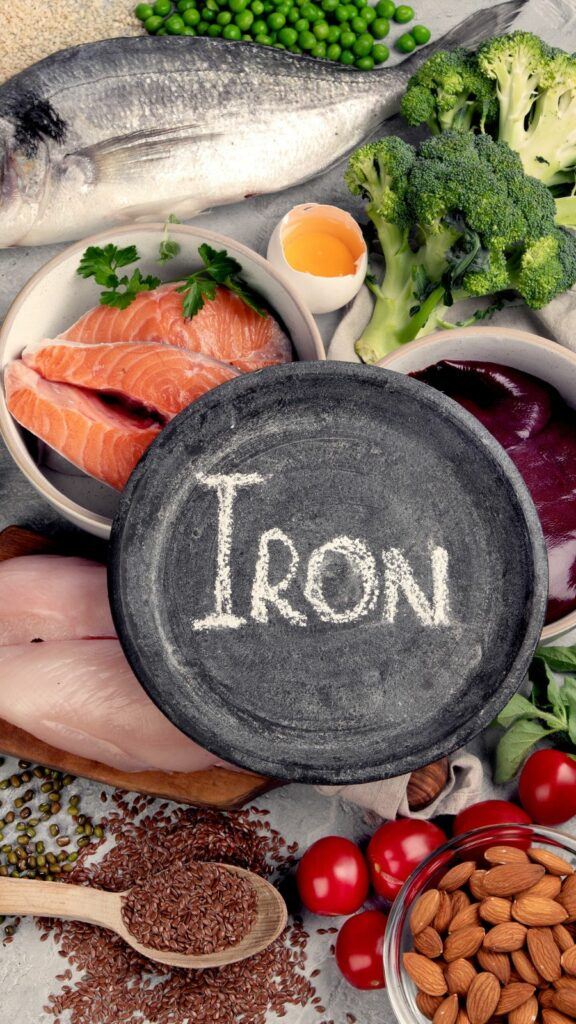
What Advice would Parents who have done baby-led weaning give you?
If you’re just starting out with baby-led weaning, it can help to get advice from moms and dads who have already been through the process. Here are some pointers from them, including us:
- Be patient and take it slow. This is a gradual process and it may take a while for your little one to adjust to new tastes and textures.
- Offer a variety of foods. This way you can make sure your baby is getting all the nutrition they need.
- Stay alert while they eat. It’s important to be aware to make sure your baby isn’t choking.
- Don’t stress about the mess. BLW can be quite messy, so be prepared for some messiness along the way.
- Have fun. BLW can be an enjoyable and rewarding experience. Encourage your baby to explore different flavors and textures and make the most of the journey.
Why should you try BLW?
So, Blw vs purees, which one wins? Baby Led Weaning is the best approach to complementary feeding in our honest opinion.
In addition to all the benefits Baby Led Weaning has, it will be a fun and learning journey for both your baby and you. It is such an incredible thing to watch your baby learn and experiment in every meal. It will also help them develop a healthier relationship with food and eating can become such a fun moment (the cleaning part might not so much, but it is totally worth it).
Therefore, you can always try and decide as you go. It is essential you feel 100% confident with this feeding method. If you do not feel you are there yet, you can always start with mashed foods and add solids little by little. Lots of people decide to carry out a mixed feeding method at the beginning and they are as great parents as the ones who do BLW. This is not going to make you a better or worse parent. The fact that you are taking the time to read about all the possibilities and trying to do the best for your baby already makes you a great mum or dad.
With the right essentials for Baby Led Weaning and knowledge, you can be on your way to starting BLW with your little one. Good luck and enjoy the process!
- Baby Led Weaning is our top choice for complementary feeding.
- BLW offers a fun, interactive, and educational experience for both baby and parent.
- It encourages a healthier relationship with food and makes mealtime enjoyable.
- You can start with mashed foods and gradually transition to solids if you’re not fully confident with BLW.
- Great parenting involves exploring different possibilities and making informed decisions for your child.
- Equip yourself with the right knowledge and essentials for a successful BLW journey.
Baby Led Weaning FAQ
How do I know when my baby is ready to start weaning?
When it comes to physical development, babies typically show signs that they are ready to begin weaning when they can prop themselves up unaided, pick up and grasp small objects, and bring food to their mouths.
Additionally, a lot of infants demonstrate an eagerness for food and might try to seize items from your plate or munch on food when it’s presented. This is an indication that they’re all set to start eating solids.
As babies start to eat solids, they may start to express less enthusiasm for bottle or breast feeding. This is a typical part of the weaning process and implies they’re ready to go on to more substantial nourishment.
Moreover, babies should be gaining weight at a steady rate. If the baby is not gaining sufficient weight or if the growth rate has slowed down, it might be an indication that they need more nutrients than what formula or breast milk can provide and that it’s time to start weaning.
Should I do Baby led Weaning or puree feeding?
BLW or Purees? It’s a personal decision that should be based on your individual child and family’s needs. Having said that, we support starting BLW right away and skipping purees completely.
The decision of whether to use Baby Led Weaning (BLW) or puree feeding for your baby is a personal one that should be made based on your individual child and family’s needs.
Baby Led Weaning is an approach to introducing solid foods where babies are allowed to feed themselves small, soft pieces of food from the beginning of weaning. This approach encourages babies to explore their own tastes, textures and preferences as they learn to chew and swallow. It can help babies to develop good self-regulation skills and to become good eaters as they get older. It is important to remember that with BLW there is no pressure to eat, as the baby will learn to regulate how much food they need and when they are full.
Puree feeding is a more traditional approach to introducing solid foods. It involves giving babies smooth, mashed or liquidised food in a spoon. This method can be useful for babies who are not yet ready to eat finger foods and require more help with eating. It can also be easier to manage, especially if you have multiple people helping with mealtimes.
Ultimately, the decision of whether to use BLW or puree feeding should be made based on what works best for your baby.
It is often best to start by introducing your baby to BLW and then transitioning to purees if necessary.
However, if you feel more comfortable starting with purees, then that is perfectly okay too. The most important thing is that you provide your baby with a safe, healthy and enjoyable experience at mealtimes.
What should I do if the process is slow going?
Patience and persistence are key when it comes to Baby Led Weaning (BLW).
If your baby is eating too slowly with Baby Led Weaning, it is important to remember that babies naturally eat at their own pace and will take time to adjust to a new way of eating.
It is important to be patient and to provide a calm, relaxed atmosphere during mealtimes. Try offering small portions of food and gradually increase the amount as your baby becomes more comfortable. Make sure that the food is cut into small pieces and soft enough for them to pick up. Encourage them to explore different tastes and textures and offer a variety of foods for them to try.
Allow your baby to feed themselves as much as possible, but be prepared to step in and help if necessary.
Be sure to give your baby plenty of praise and positive reinforcement when they are successful.
Above all, have patience and continue to offer a variety of foods and mealtime experiences; with time, your baby will learn to eat at a healthy pace.
What should I do if I find myself overwhelmed?
Remember, Baby Led Weaning (BLW) is a journey and every baby learns and develops at their own pace. Don’t put too much pressure on yourself and go at a pace that works for you and your baby.
- If you’re feeling stressed out about Baby Led Weaning (BLW), it’s important to remember that it’s a journey and every baby learns and develops at their own pace. Don’t put too much pressure on yourself and go at a pace that works for you and your baby.
- Make sure you have all the supplies you need before diving into BLW – think high chair, bibs, plates, spoons, etc. Being prepared can help ease some of the stress.
- Learn all you can about BLW by taking a class or reading a book. Maria and I are working on an ebook about it, we hope to finish it soon so we can offer it for you for free.
- Surround yourself with support from family, friends, or other parents who are also doing BLW. Talking about your experiences with others can make you feel less alone and more supported.
- Don’t forget to take care of yourself. Eat well, get enough sleep, and take a break from BLW if you need to. If you’re feeling overwhelmed, it’s okay to step back and come back to it when you’re feeling more relaxed.
We’re Maria and Alberto, a married couple and educators who are nutrition enthusiasts. Even before we had kids, we were already crazy about nutrition.
We’d read scientific articles, watch videos from nutritionists, and spend hours listening to nutrition podcasts.
Today, we continue doing this, but in a different way, as we’ve learned to sift through the noise and trends. Nutrition, like any other field of knowledge, the more you read and learn, the more you develop a comprehensive understanding of reality, and that’s what has happened to us.
Before having our first child, we focused on learning everything we could about child nutrition, using the same techniques we had already employed, backed by our extensive knowledge in nutrition.
Our mission is to help other parents with their children’s nutrition, to help them become the best versions of themselves.
If we are what we eat and drink, which is absolutely true, let’s do it right!


